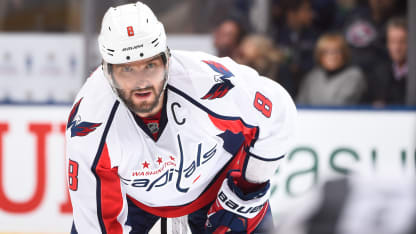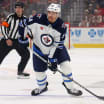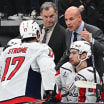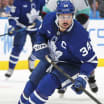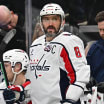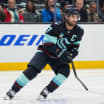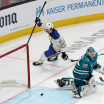Ovechkin also worked on his one-timers before leaving the ice. As Chorney said of Ovechkin, "Anything to work on scoring goals he's in for," but his emphasis this season on getting to the front of the net more often stems from a conversation he had with Capitals coach Barry Trotz during the offseason.
"The game keeps changing, so he's looking for different ways to contribute," Trotz said. "He's got a lot more goals in that blue paint [goal crease], and then he can always pop out to his spots. He's always going to get his shots off the rush. So he's looking to add to his game. He's a big, heavy, strong guy, and once he goes there, he's almost impossible to move. And with those hands that he has, if he finds any loose pucks, I'm pretty sure he's going to get a pretty good look."
Ovechkin did not score in a 4-2 loss to the Toronto Maple Leafs at Air Canada Centre on Saturday, but his presence in front contributed to Nicklas Backstrom's goal that got the Capitals to within 3-1. While battling for position, Ovechkin knocked down Maple Leafs defenseman Connor Carrick in the crease, and the puck eventually caromed in off Carrick.
Having scored 537 goals in his NHL career, including seven seasons with at least 50, Ovechkin knows he has to do whatever it takes to score. At age 31, he isn't too old to try something different.
"The defenses are skating well," he said. "The forwards [are] going back. Sometimes you just have to find different ways to score. Obviously in front of the net, there's lots of rebounds. Especially with teams who play right now, the goalies give up lots of rebounds. You have to go out there and try to find it."
Players such as San Jose Sharks forward Joe Pavelski, who is one of the best in the League at deflections, spend countless hours working on them at the end of practices and morning skates. Ovechkin acknowledged that tipping pucks out of midair isn't easy, but practicing it can pay off.
